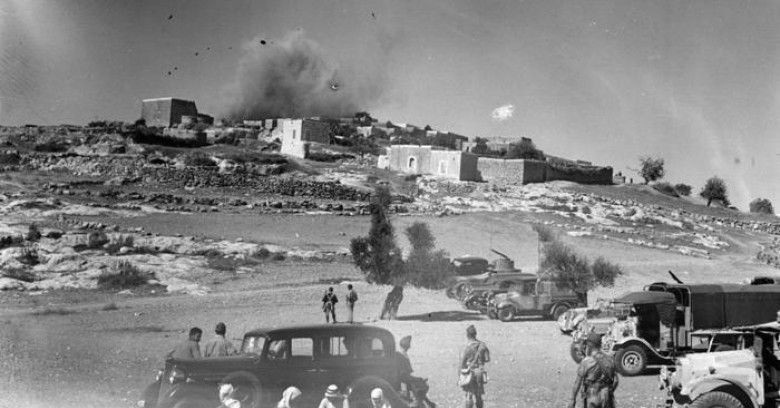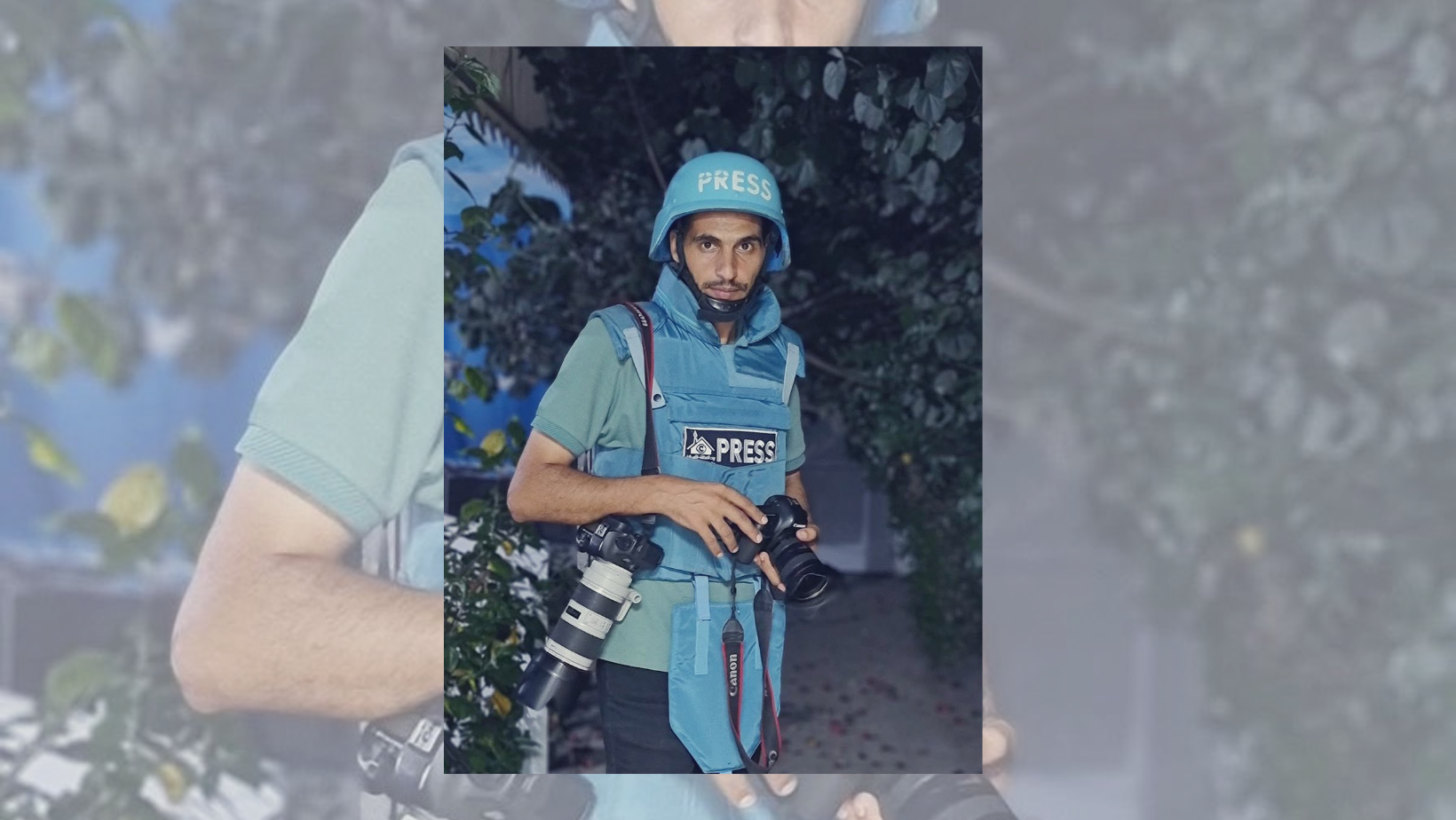JERUSALEM, March 5, 2010 (WAFA)- This week (February 24 - March 2) saw a significant increase in the number of Palestinian injuries due to clashes that took place in East Jerusalem. Overall, 29 Palestinians were wounded in various incidents throughout the West Bank, compared to a weekly average of 14 injuries thus far in 2010. Five Israeli police officers and security forces were also injured, reported the Office for the Coordination of Humanitarian Affairs (OCHA).
On February 28, Palestinians and Israeli security forces clashed in and around the Old City of Jerusalem, resulting in the injury of thirteen Palestinians and four Israeli police officers, and the arrest of eight Palestinians. The clashes, which involved stone‐throwing and the firing of rubber‐coated metal bullets and tear gas, erupted after a group of Israelis and foreign nationals, accompanied by Israeli forces, entered the Al Aqsa mosque esplanade.
In the city of Hebron, clashes continued during the week, following last week’s Israeli cabinet decision to include the Al Ibrahimi Mosque/Tomb of the Patriarchs and Bilal Mosque/ Rachel’s Tomb to a list of Israeli “national heritage sites”; one Palestinian was physically assaulted and injured and several others suffered from tear gas inhalation. Two brothers (aged nine and 12) were arrested. Cases of tear gas inhalation were also reported during a demonstration to protest the ongoing ban on the travel of Palestinians’ vehicles along the main street in the Israeli‐controlled area of Hebron City (Ash Shuhada Street in H2).
The week’s remaining injuries include: four during the weekly demonstration against the expansion of Hallamish settlement (Ramallah); four during the planting of seedlings in the proximity of Yitzhar settlement (Nablus); four in response to a stone‐throwing incident at the entrance of Husan village (Bethlehem); and three in various other circumstances.
Israeli forces conducted 94 search operations inside Palestinian towns and villages throughout the week, compared to a weekly average of 116 in 2010; as in previous weeks, the majority of this week’s operations took place in the northern West Bank (55). Of note, one of the operations took place in the Silwan neighbourhood of East Jerusalem following a shooting incident, during which an Israeli security guard, deployed next to the Beit Yonatan settlement was injured. The latter is a seven‐floor settlement building, constructed in Silwan without a building permit in 2004 by Israeli settlers. Seven Palestinians, including a boy, were arrested during the operation. Another search operation was conducted in Beit Ur at Tahta village (Ramallah) after an Israeli military post on Route 443 came under fire; no injuries were reported.
During the week, there was only one settler‐related incident affecting Palestinians, compared to a weekly average of eight such incidents in 2010. This week’s figure is one of the lowest levels recorded by OCHA since the beginning of 2006. In this incident, a four‐year‐old Palestinian child was physically assaulted and injured in the Sheikh Jarrah neighbourhood of East Jerusalem, during a confrontation between Israeli settlers and Palestinians that erupted in the vicinity of a house occupied by settlers in early November 2009, during the celebration of the Jewish holiday of Purim; one Palestinian was also arrested.
Also this week, three incidents of stone or Molotov cocktail throwing by Palestinians at Israeli vehicles on West Bank roads were reported. One of these incidents, next to Azzun village (Qalqilyia), resulted in the injury of a settler, who lost control over the vehicle causing it to turn over. The other two incidents, in the Ramallah and Qalqiliya areas, resulted in no injuries or damages.
Also this week, a section of a parking lot in the Silwan neighborhood of East Jerusalem, which also serves as a passage for children attending a nearby kindergarten, collapsed. According to the Silwan Land Defense Committee, this occurred due to the ongoing archeological excavations carried out by Israeli settlers in this area.
This week, the Israeli Central Bureau of Statistics (ICBS) released new data about construction activities in Israel and Israeli settlements in the West Bank. According to this data, the number of housing unit starts in West Bank settlements (excluding East Jerusalem) in the fourth quarter of 2009 was 593, a slight increase compared with the third quarter of the year (538), and a significant increase compared with the previous two quarters (321 and 339). This increase took place despite the partial freeze in new settlement construction announced by the Israeli Cabinet in November 2009.
In East Jerusalem, the Jerusalem municipality distributed demolition orders against eight Palestinian residences in Silwan neighbourhood, due to the lack of building permits. These orders affect 12 families. In another area of Silwan ‐‐ Al Bustan ‐‐ some 90 Palestinian houses are at risk of demolition due to pending demolition orders issued in past years, placing more than 1,000 Palestinians at risk of displacement. At a press conference held on 2 March 2010, Jerusalem’s mayor presented his plan for developing a tourist complex in Al Bustan that would require the demolition of a portion of these homes and the relocation of displaced residents to other areas of Silwan.
In Area C of the West Bank, the Israeli Civil Administration distributed stop work orders against four Palestinian‐owned structures, including a stone processing factory, a plant nursery, and two commercial premises in the town of Beit Ummar (Hebron). Since the beginning of 2010, a total of 48 Palestinian‐owned structures have been demolished in Area C.
Also during the week, in an operation carried out in an agricultural area next to Kafr Dan village (Jenin), in an area designated as Area B, the Israeli military destroyed five water wells and pumps, which were dug without authorization from the Israeli‐Palestinian Joint Water Committee. No demolition orders or prior notice were delivered in advance to the operation. As a result the agricultural livelihoods of 32 families, who relied on the water extracted from these wells to irrigate 36 greenhouses and 169 dunums of cultivated land, have been severely affected. One farmer was injured by Israeli forces in a confrontation that erupted during the operation.
The Israeli authorities imposed a general closure on the West Bank from February 26 ‐ March 1 due to the Jewish holiday of Purim. As a result, all Palestinians holding valid permits were prevented from entering Israel and East Jerusalem, except medical cases and Palestinian employees of international NGOs and UN agencies. In the Jordan Valley, the Israeli army closed a road gate on a dirt road linking two small herder communities (Al Hadidiya and Khirbet Humsa) to their main service center in Tubas City. For two years, the gate has opened only twice daily, two days a week. When the gate is closed, the residents are forced to make a long detour and cross a permanent checkpoint (Hamra) to reach Tubas City.
During the reporting period, OCHA recorded the removal of five earthmounds and roadblocks, which blocked vehicular access to agriculture areas, along Road 60 in the Hebron area, the main traffic artery. This follows the removal of 24 obstacles in the same area during January 2010.
Also during the week, the Israeli authorities resumed Barrier construction next to the town of Beit Jala, in the northwest part of the Bethlehem Governorate, after it was frozen for over three years, and uprooted 35 olive trees. Overall, the construction of his section of the Barrier will require the seizure of some 300 dunums of land and the uprooting of some 2,000 olive trees, according to the municipality of Beit Jala. Following the resumption of works, Palestinians held a protest and clashed with Israeli forces.
Similar to previous weeks, Israeli forces continued to enforce restrictions on Palestinian access to the 300 meter‐wide Israeli‐declared “no go area”, or “buffer zone,” located along the border, by opening fire at Palestinians present in the vicinity.
This week’s open‐fire incidents resulted in the killing of one armed Palestinian and the injury of another, as well as the injury of two civilians, a farmer working in an agricultural area east of Gaza City and a man collecting scrap metal in the vicinity of Nahal Oz Crossing, east of Gaza. The militants killed and injured this week were part of an armed group that reportedly attempted to plant an improvised explosive device near the border fence in the Beit Lahiya area.
Another two incidents of opening fire at civilians near the border were reported this week, both of which ended with no casualties or property damage. In addition, on eight different occasions during the week, Israeli tanks and bulldozers launched incursions a few hundred metres inside Gaza and withdrew after conducting land leveling operations. Since the beginning of 2010, Israeli forces have killed ten Palestinians, including four civilians, and injured 21 others, including at least 11 civilians.
Also this week, an 18‐year‐old Palestinian female was wounded by shrapnel, after a mortar shell fired by a Palestinian armed faction towards Israel exploded prematurely, landing inside Gaza.
Hamas militia in Gaza reportedly arrested the militants. Other incidents involving the firing of rudimentary rockets towards southern Israel continued during the week, but resulted in no injuries or damage to property.










